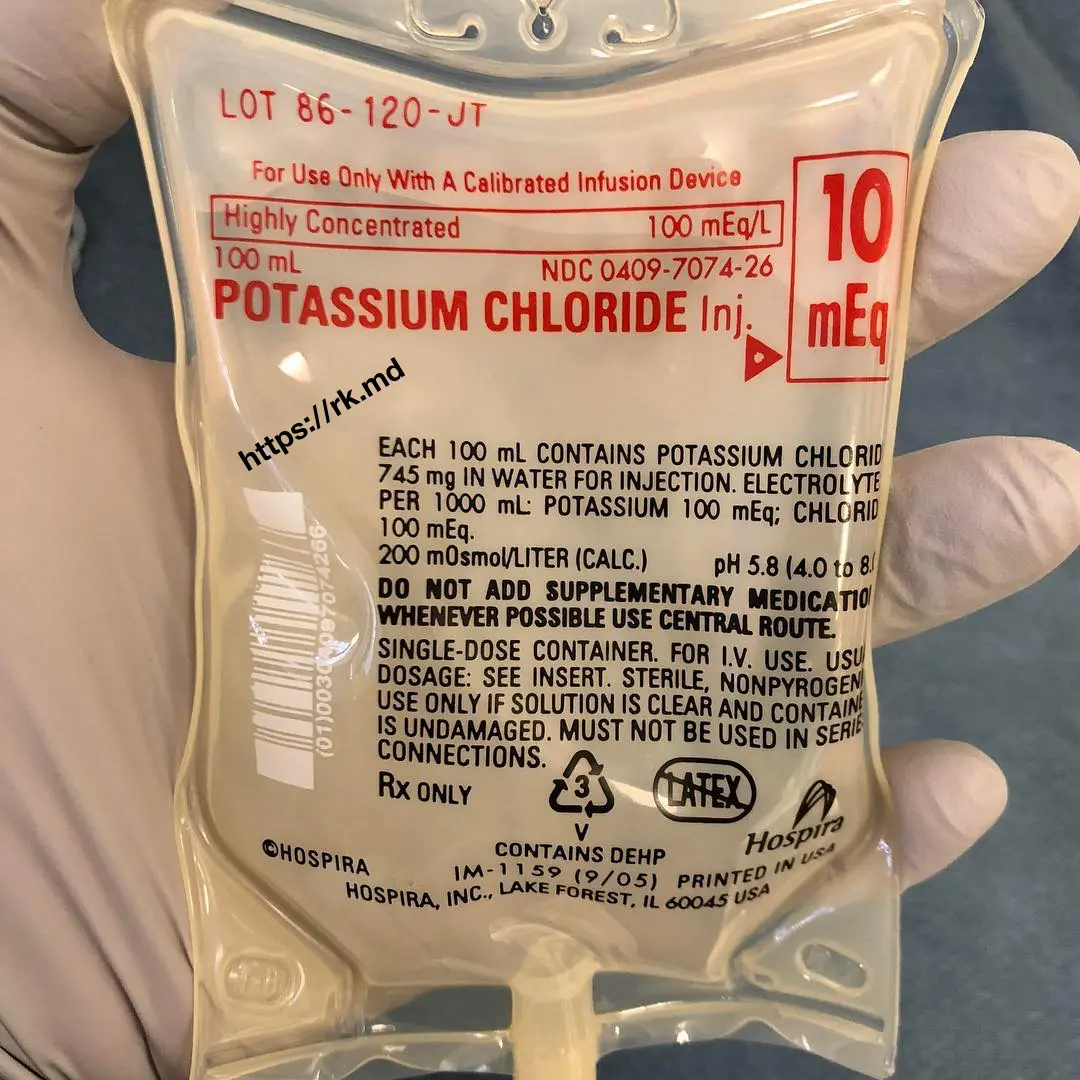Potassium chloride (KCl) is a form of intravenous electrolyte repletion in hypokalemia – the most common electrolyte disorder in hospitalized patients often caused by diarrhea, vomiting, loop/thiazide diuretics, steroids, and poor intake among many other etiologies.
Since potassium is primarily an INTRACELLULAR ion, our plasma levels (ie, the concentrations we see on a metabolic profile) are fairly low (3.5 – 5 mEq/L). Depending on the patient’s size, this value decreases roughly 0.3 mEq/L for every 100 mEq decrease in TOTAL BODY potassium. As a rule of thumb, 10 mEq of potassium repletion will increase serum potassium by ~0.1 mEq/L.
In general, I replete no more than 20 mEq/h intravenously with only peripheral IV access (risk of phlebitis); however, I prefer to use the oral route in less emergent situations since it’s safer (the gut does an excellent job of regulating potassium absorption) and minimizes the risk of overshooting potassium correction (“rebound hyperkalemia”). Unfortunately, traditional oral potassium repletion tends to be difficult for some patients to swallow (K-Dur pills are huge!) One must also consider concomitant magnesium repletion since hypomagnesemia translates to more renal wasting of potassium.
Drop me comments with questions! 🙂






